The 9 Best Cognac Cocktails
Cognac played a special role as the original spirit of choice in early cocktail creation.

Rum, rye whiskey, and bourbon all have a long and storied history in America, but when it comes to early cocktail creation in the U.S., Cognac plays a special role as the original spirit of choice.
First exported to the U.S. as far back as the late 1700s, the French, grape-based brandy became incredibly popular at the turn of the century, coinciding with early cocktail creation. Both bartending pioneers Jerry “The Professor” Thomas and Harry Johnson call for Cognac or another type of brandy in a majority of the recipes featured in their influential cocktail books.
Cognac is the star ingredient in some of the most iconic cocktails in the world, including the Sidecar, Sazerac, and the original French 75. The fruit aromatics in the grape-based spirit work equally well with citrus and lively acidity as well as rich and herbaceous spirits because of its sturdy, woodsy backbone.
From spirit-forward classics to fruity sours and crisp spritzes, here are nine of our favorite Cognac cocktails you should know.
Arnaud’s French 75
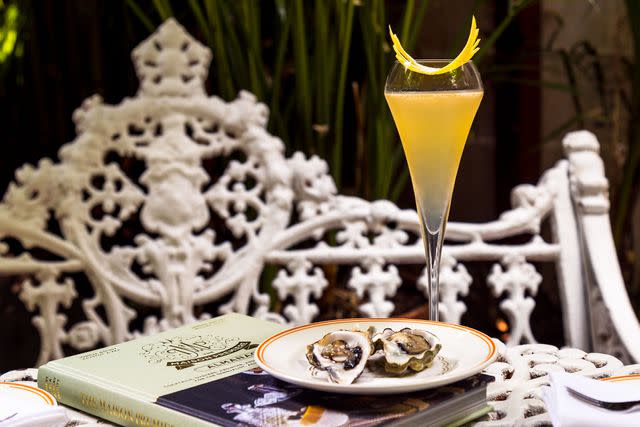
Matt Taylor-Gross
This celebratory sparkler is frequently served with gin, Champagne, lemon juice, and sugar. This recipe, named after the French 75 Bar at Arnaud’s Restaurant in New Orleans, takes inspiration from the original iteration and swaps gin for Cognac. The result is a softer, and slightly more fruit-forward sparkling cocktail.
You can serve this French 75 in a coupe glass, a flute glass, or a white wine glass, as the team from Maison Premiere suggests, to get the full aromas of this potent mixture.
Sidecar
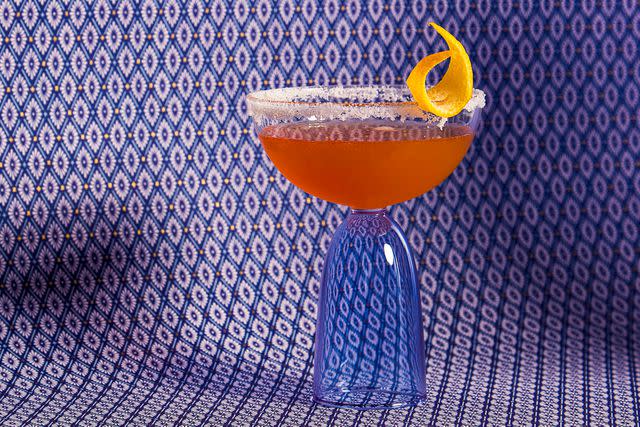
Matt Taylor-Gross / Styling by Lucy Simon
The Sidecar, likely invented around World War I, named after the motorcycle attachment, just may be the most famous of all Cognac cocktails.
This classic sour consists of a simple build that includes Cognac, orange liqueur, and freshly squeezed lemon juice. This recipe recommends Cointreau for the brightest citrus flavor, an orange peel for garnish, and a signature sugared rim.
Vieux Carré
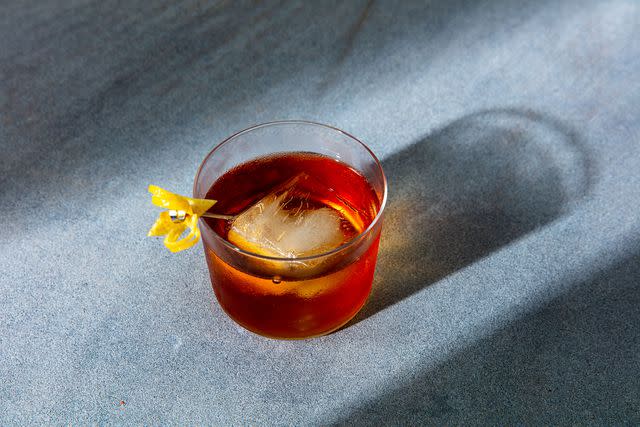
Matt Taylor-Gross / Food Styling by Lucy Simon
Bartender Walter Bergeron introduced this iconic cocktail in the 1930s at New Orleans’ Carousel Bar inside the legendary Hotel Monteleone. Vieux Carré translates to “old square” in French and is named for the city’s French Quarter neighborhood.
Equal parts rye whiskey and cognac come together with Benedictine — a brandy-based herbal liqueur, sweet vermouth, and a combination of Peychaud’s and Angostura bitters.
Brandy Daisy
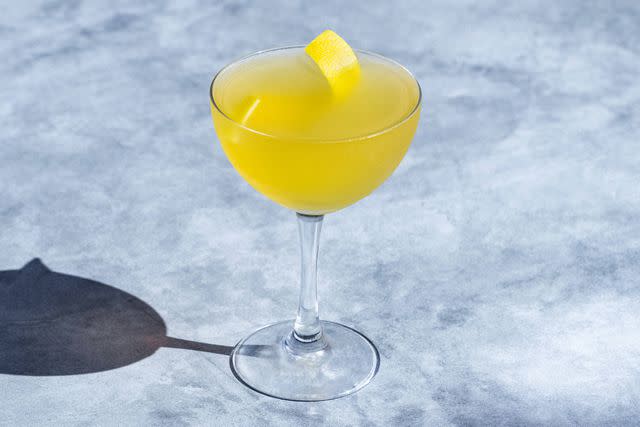
The Daisy is a category of drinks that dates back to the mid-1800s and follows a basic formula of spirit, liqueur or syrup, lemon juice, and soda water.
The Brandy Daisy combines brandy, Yellow Chartreuse, freshly squeezed lemon juice, and a splash of soda water. The brandy base is a sturdy backbone to the soft anise and saffron aromatics, and honey sweetness of the Yellow Chartreuse. Sparkling soda water lends effervescence and lengthens the drink.
Nocino Sour
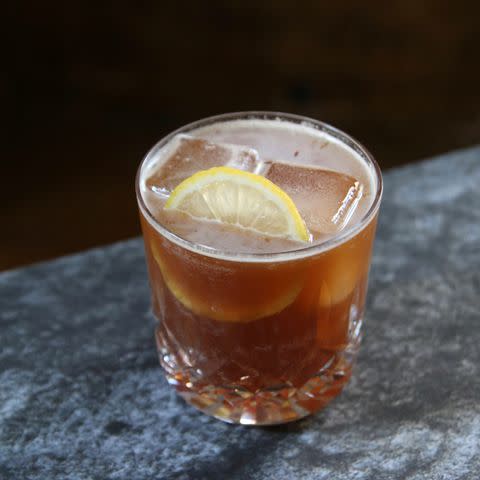
This Cognac-based sour cocktail calls for nocino — an Italian walnut liqueur — as well as fresh lemon juice, simple syrup, and Angostura bitters.
Bittersweet, aromatic, and nutty, the walnut liqueur is balanced with bright citrus and rich fruit and floral notes from the Cognac. The important bitters addition lends warming baking spice qualities to the drink.
Bacchanalian
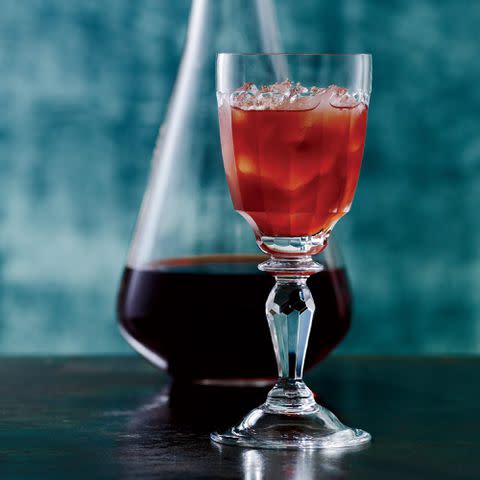
New Orleans bartender Chris Hannah created this riff on a New York Sour for Mardi Gras celebrations.
Cognac serves as The Bacchanalian’s base and a fruity red wine, such as Claret or Merlot, is shaken into the drink rather than floated on top. This is balanced by fresh lemon juice and light brown sugar syrup with a garnish of nutmeg to help pop the flavors.
Sazerac
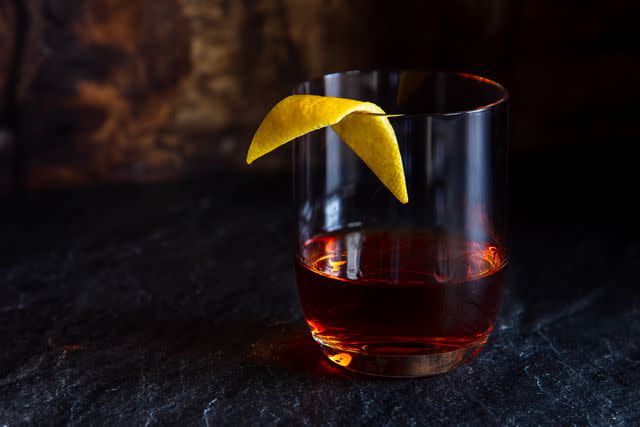
Matt Taylor-Gross / Food Styling by Lucy Simon
The Sazerac is another iconic New Orleans cocktail and traditionally consists of rye whiskey, brandy, bitters, sugar, and absinthe.
The Sazerac is so intrinsically tied to the Big Easy, that the state of Louisiana passed a Senate bill in 2008, making the Sazerac the official New Orleans cocktail.
This booze-forward classic calls for just a rinse of absinthe in the glass before it is discarded, and both Peychaud’s and Angostura bitters to be muddled with a sugar cube.
Sprezzatura Royale
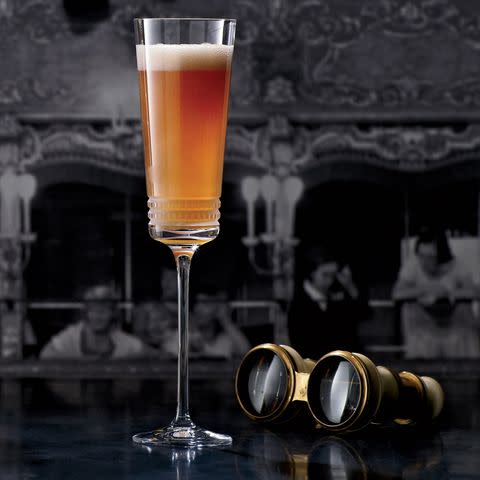
This sparkling rosé cocktail from bartender Joaquín Simó flips the script and has an amaro base balanced by equal parts Cognac, honey syrup, and fresh lemon juice. The drink is then topped with sparkling rosé for a spritz-like effect.
“Sprezzatura refers to the stylishly disheveled look perfected by Italian men,” says Simó. “An artfully misknotted tie, an elegantly askew collar, mismatched socks — all done with a devil-may-care attitude.”
Shortcut Café Brûlot
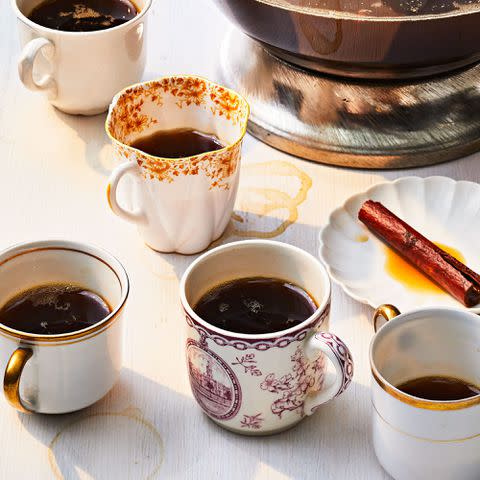
Café Brûlot is commonly prepared tableside at restaurants in New Orleans, where the elaborate process involves lighting a concoction of citrus- and cinnamon-infused brandy on fire and pouring it down a clove-studded orange peel into a silver-lined punch bowl, then dousing the flames with chicory-flavored coffee.
Cookbook author and part-time resident of New Orleans Jessica B. Harris has come up with this shortcut recipe for a Cafe Brûlot, a perfect after-dinner treat.
In this version, orange liqueur, Cognac, fresh lemon and lime juice, cinnamon, cloves, and hot coffee are warmed together and can be served directly from a heatproof bowl or, as Harris does: “I mix it all and pour it out of an antique Victorian teapot.”
For more Food & Wine news, make sure to sign up for our newsletter!
Read the original article on Food & Wine.

